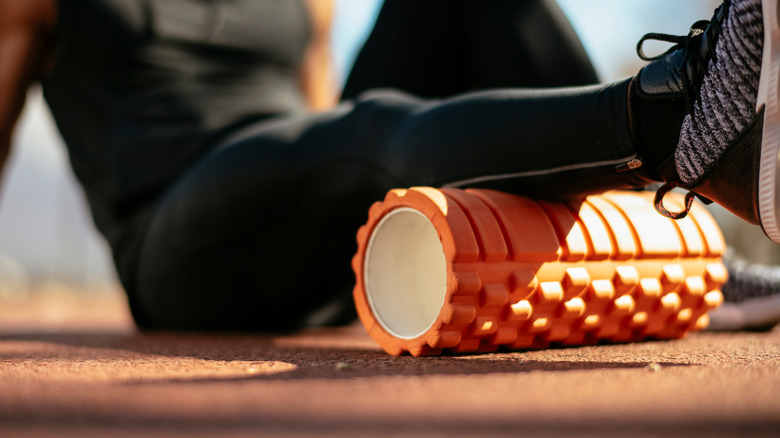If Walking Is Your Primary Form Of Exercise, Do You Still Need To Take Rest Days?
Walking is a great exercise you can do throughout your whole life to improve your health. According to Harvard Medical School, walking an hour a day busts the effects of 32 obesity-promoting genes in half. If you're craving something sweet, go for a 15-minute walk to reduce your craving. Walking may also reduce your risk of breast cancer as well as alleviate joint pain. Walking is also perfect for an active rest day to allow your body to recover from high-intensity exercises like running, powerlifting, or CrossFit.
For some people, walking is their main exercise. Since it's often seen as a low-impact activity, a rest day might seem unnecessary. However, not all walkers are alike. Some people opt for a leisurely pace while pushing a stroller, and others will churn their arms vigorously to move their bodies much faster. According to a 1983 study in The American Journal of Sports Medicine, Olympic race walkers were found to walk an average of 12.5 kilometers per hour, which is faster than many people can run.
As a walker, whether or not you need a rest day depends on the intensity of your walking program.
How to determine your walking intensity
You can easily find out the intensity of your walking program by doing a talk test, according to Health Unit. If you can sing, that's light intensity. Moderate activity is when you can talk, but can't sing. You're doing vigorous walking if you can't carry a conversation with someone. This also goes for other types of exercise.
According to Healthline, if most or all of your walking is light intensity, you might not need to take a rest day at all. If your walking program is moderate or vigorous, you'll probably need to take a few rest days a week. The need for a rest day might also hinge on the duration of your walks. For example, if you do light walking for an hour a day, seven days a week, you might need one rest day and just walk six.
You could use the American Heart Association's recommendation for weekly exercise as an estimate. It suggests 150 minutes of moderate exercise per week or 75 minutes of vigorous exercise. If you're doing a moderate walk for 20 minutes a day, seven days a week, you're probably okay without a rest day. However, if you're up to 30 minutes a day, you'd be fine walking five days a week and taking two nonconsecutive days off. You should also consider your level of fitness. Beginners definitely will need at least one rest day a week regardless of intensity until their body gets used to exercising.
Rest versus recovery days
According to the National Academy of Sports Medicine, a rest day doesn't necessarily mean lying on the couch eating potato chips. While your body rests from the impact of your walking program, you can incorporate other types of movement to move fresh blood through your muscles. If you have access to a rowing machine or an elliptical machine, these exercises can work different muscles or move them in different patterns so you reduce your risk of overuse injuries. An active recovery day might also include foam rolling exercises for your legs or easy stretches to open up your chest, shoulders, and side body. Swimming is also a great exercise for your whole body that limits the impact on your joints.
Even if you decide your walking program doesn't need a rest day, you'll need to be on the lookout for overtraining, such as muscle soreness, joint pain, trouble sleeping, or mood swings. Just like running, walking is a repetitive movement that can put you at risk for overuse injuries if you don't take a break from your workout routine. According to Twin Cities Orthopedics, overuse injuries often start with minor pain but begin to get worse without adequate rest. We often think we can work through the pain, thinking it will just go away; but the longer you let the pain continue, the longer you'll need to heal.



